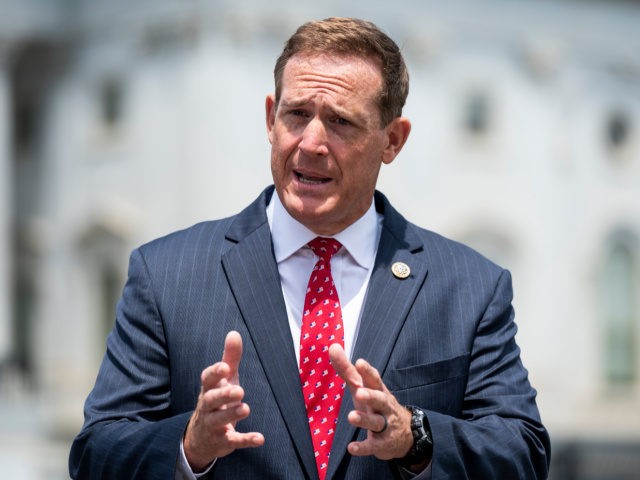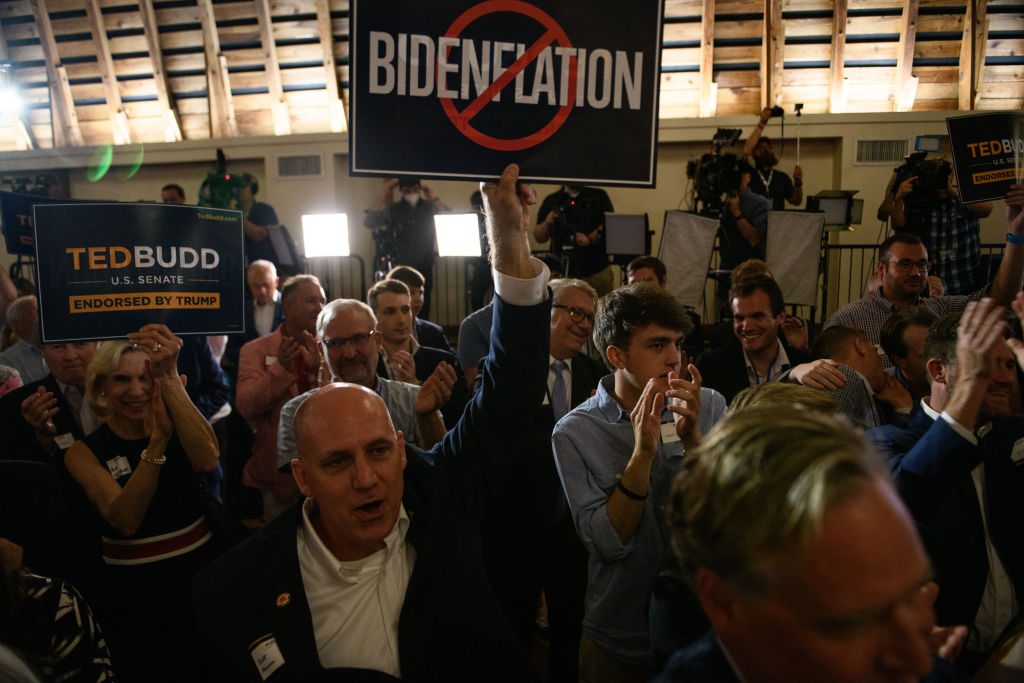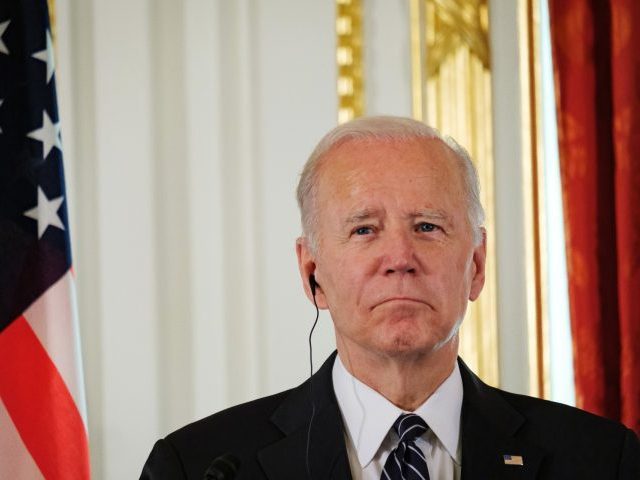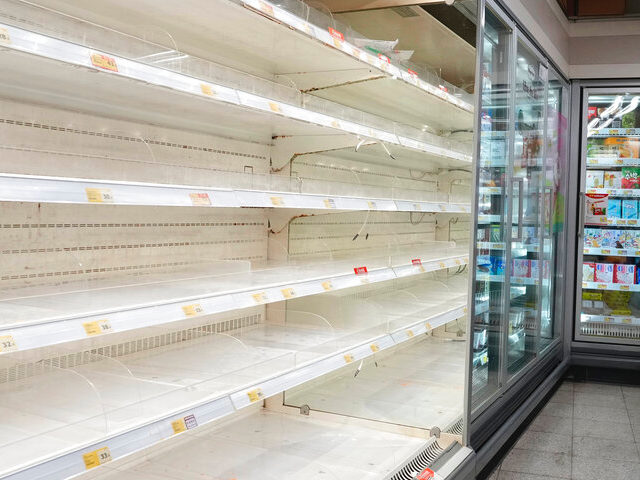here's what it's looking like from the grassroots:
Behind the scenes the collapse is gaining momentum. Without parts and supplies lay offs coming.
https://www.youtube.com/watch?v=GdyIj0mwMcE
Inside information that the collapse is occurring across all sectors of the economy.
Lenders are About to Fail as Demand Dries Up
https://www.youtube.com/watch?v=V6UQYaZYp2Q
My daughter in law filmed another empty Walmart. Worker has no work because no food to stock.
How much time do we have left? Here’s what the experts say!
20 Signs That The Collapse Of Society Is Accelerating
All I can say is that Ive been a prepper for a decade, and this used to be an abstract activity. But in the last few years I have repeatedly had to rely on my stores because of shortages in the shops. People used to snigger at my prepping, now they ask me for advice. This said I think it wont be a total collapse based on historic precedent like WWII. There have been plenty of occasions where there are "resets" caused by global catastrophe and economic meltdown, but humanity has a way of restructuring quickly to adapt to the new reality. I think on a global scale, a lot of people will die. In the developing world, and arid countries, there will be famine. In the west we will suffer because we wont have the access to water, energy and medicines that we rely on, so the sick and infirm will be hit hardest. For the majority of us, we will survive, but end up a lot thinner, a lot poorer, and most likely much better politicians as the crowd turns on the career bullshitters that led us to this catastrophe.
ECONOMIC STAGE SET, CAR LOAN DEFAULTS SURGE, AMERICANS MONEY
VANISHING, AMAZON SALES SLOWDOWN
The Fed Has No Idea How Bad it is Out There
REDFIN Inventory DUMP! Housing Market CRACKS
25% of Buyers DROPPING OUT! Housing Market Changes Ahead
The Homeless Problem in Washington, DC is Out of Control
Chris Hedges | The HORRIFIC State of the American Empire
A Conversation with Chris Hedges: Corporate Totalitarianism
“Joe Biden wants this crisis. He wants to reshape America in his image, he thinks that these are future voters for him,” he said. “He wants this crisis. They’re willing to take a political hit now to get more future Democrats across the border.”
Exclusive — Rep. Ted Budd: Biden’s Disastrous Economic Policies ‘Showing up at Our Kitchen Tables and Gas Pumps’

Inflation is tax on everyday Americans — and the result of a string of failed economic policies pushed by the far-left Biden administration, North Carolina U.S. Senate candidate Rep. Ted Budd (R-NC) told Breitbart News Daily on Tuesday.
“You look at [President Joe Biden] shutting down pipelines, you look at him injecting money into the economy and encouraging people not to work — what that’s done is you have so much money chasing goods that aren’t there because people have been encouraged not to produce,” Budd told host and Breitbart News Editor-in-Chief Alex Marlow.
“And that’s led to the inflation we’re having right now. It’s led to shortages, and disruption in the supply chain, so that whole set of economic issues shows up at our kitchen tables and at our gas pumps.”
LISTEN:
Budd won the Republican primary election on May 17 and is set to face off against former state Supreme Court Chief Justice Cheri Beasley in the race to fill retiring Sen. Richard Burr’s Senate seat. Both candidates secured their respective nominations less than hour after polls closed in the state, though surveys so far have shown Budd narrowly leading Beasley. Budd has contended a vote for Beasley in the November general election would be a vote to support Biden’s failed economic agenda, an issue which becoming increasingly important to voters of all political affiliations.
“I think my message resonates with people… I’m an ‘America First’ candidate,” Budd said. “If you care about safety in schools, you care about education, you care about an opportunity for the next generation, if you care about security, if you care about economic growth — all these things are the things that I support. [Voters] realize that Cheri Beasley’s principles will lead to higher gas prices, higher grocery prices, more crime on the streets. She’s already got a horrible record among our [district attorneys] across our state of overturning sentences for horrible criminals that need to stay in jail.”
“… I don’t call myself a farmer, but again, I live on a working cattle farm still here in Davie County today. I just think we ought to all be out there, if we’re in public office, trying to make lives better for people,” he continued.
By subscribing, you agree to our terms of use & privacy policy. You will receive email marketing messages from Breitbart News Network to the email you provide. You may unsubscribe at any time.
Right before the primary election, Budd finished a 100-county tour throughout North Carolina, where he spoke with voters about the top issues they are grappling with under the Biden administration. Budd spoke to Breitbart News after the tour, noting how voters vocalized being most frustrated about inflation.

Supporters of North Carolina GOP Senate candidate Rep. Ted Budd (R-NC) celebrate his Republican nomination at a Primary election night watch party at WinMock at Kinderton on May 17, 2022 in Bermuda Run, North Carolina. (Melissa Sue Gerrits/Getty Images)
“I heard from folks who are on a fixed income and say they’re having a hard time affording the basics like food and gas. I’ve heard from families who tell me about a loved one who has been impacted by fentanyl or other drugs,” he said at the time, again crediting Biden’s “tax-and-spend” policies “that bid up the cost of goods and pay people to stay home.”
On Tuesday, Budd proposed bringing back former President Donald Trump-era economic policies, including encouraging more workforce participation.
“The fastest growing quartile of earners were those at the bottom of economic pyramid, so those that are just getting their feet under them economically were the fastest growing wages, which was fantastic,” he said. “…You had the most gains among women, among people of color, among Hispanics. So we were also not only driving down unemployment numbers, we were increasing workforce participation…We need more people to get off the sidelines and into the workforce, and we have to create the incentives to do that.”
Breitbart News Daily airs Monday through Friday from 6:00 A.M. to 9:00 A.M. on Sirius XM Patriot 125.
New Homes Sales Cratered in April Amid Rising Rates and High Prices

Sales of new single-family homes in the U.S. plunged in April, the fourth consecutive monthly decline, falling to the lowest level since April of 2020.
New home sales decreased 16.6 percent in April compared with the previous month to a seasonally adjusted annual rate of 591,000, the Commerce Department said Tuesday. That is just barely above the 582,000 level hit during the initial lockdown phase of the pandemic when the economy was brought to a near halt.
Economists had forecast home sales to fall 1.7 percent to 750,000 from the preliminary March report of 763,000. The March report was revised down to 709,000.
Existing homes sales have been cratering, as well. April home sales declined by 2.4 percent compared with March. At a seasonally adjusted annual rate of 5.61 million, sales were at the slowest pace since June of 2020, according to data released last week from the National Association of Realtors. Compared with a year ago, sales were off by 5.9 percent.
The sharp slowdown in home sales is consistent with the possibility of a recession beginning over the next 12 to 16 months. On the other hand, rising mortgage rates and rising home prices likely indicate that a recession is not yet imminent or already underway.

New home sales are off a sharp 26.9 percent below the April 2021 level, when purchases stood at an annual rate of 809,000. ales were 26.9% below the same month a year earlier, when they stood at an adjusted annual rate of 809,000.
The median price of a new home jumped in April to $450,600 from $435,000 the previous month. That is an all-time record high. After adjusting for inflation, the pre-financial crisis high of 2007 would be $365,000 in today’s dollars. In real terms, new house prices are up by around 23.3 percent since 2007.

Mortgage rates have moved sharply higher this year. At the end of last year, the 30-year fixed conforming mortgage rate was at 3.353 percent. By the end of March, it had moved up to 4.811 percent. As April came to an end, it was at 5.415 percent. As a result, the monthly payment a buyer would owe on a home purchased in April is hundreds of dollars higher than what it would have been at the start of the year. That may have pushed some would-be buyers out of the market.

What’s more, sixty-nine percent of Americans say the economy is bad, according to a recent poll from CBS News and YouGov. Combined with worries about a recession looming in the near future may also be discouraging some families from buying. High levels of inflation and falling real incomes have hurt consumer confidence.
New home sales are counted at signing, so the figures for April would reflect market conditions and consumer sentiment at the time. Existing home sales are counted at closing, which typically happens 30 to 60 days after the signing, making them a lagging indicator.
Housing starts are counted when construction begins on a project and tend to be a leading indicator for both real estate and the broader economy. Single family housing starts fell in three of the first four months of the year. In April, single-family starts were down fell to a rate of 1,087,000, 13.4 percent below the March rate.
The number of single-family homes available for sale has been on steep climb. In April, there were 444,0000 homes available for sale on a seasonally adjusted annualized basis. This represents a supply of nine months at the current sales rate, an indication that home builders have more than the typical supply of inventory. Around four to six months is normally considered a balanced, normal supply.

Supply chain constraints and a tight labor market are also holding back construction, leaving many homes unfinished. The inventory of new homes under construction is at 5.9 months, close to the record set in 1980. At 288,000, there are more homes under construction than any time since December 2006.
There are 118,000 homes for sale for which construction has not been started, the most ever, which is also reflective of supply constraints. This amounts to 2.4 months supply, almost double the normal level.
White House Warns of Global Food Shortages After Ukraine Invasion

The White House confirmed Monday they expect certain parts of the world to suffer a food shortage as an effect of Russian President Vladimir Putin’s invasion of Ukraine.
“We do anticipate that higher energy fertilizer, wheat, and corn prices could impact the price of growing and purchasing critical food supplies for countries around the world,” White House press secretary Jen Psaki said Monday.
She said food shortages were not expected to hit the United States, but rather countries in Africa, the Middle East, and Southeast Asia.
Reports have pointed out that both Ukraine and Russia produce a significant portion of the world’s wheat, corn, and barley as well as energy and fertilizer.
Despite Psaki’s assurance that the United States would not suffer a food shortage, the cost of fertilizer, grain, and fuel could have a significant impact on food prices.
Psaki said the White House could continue to work with global organizations to “do everything we can” to “mitigate” food shortages around the world.
“There are active discussions now,” she said, describing the Biden administration’s efforts to tackle the problem.”We’re certainly mindful that even if we’re not seeing an impact at this moment that sometimes supply chain impacts can have a lagging impact.”